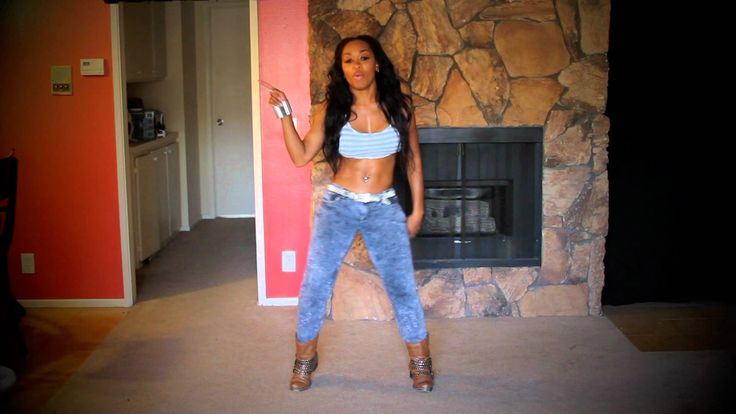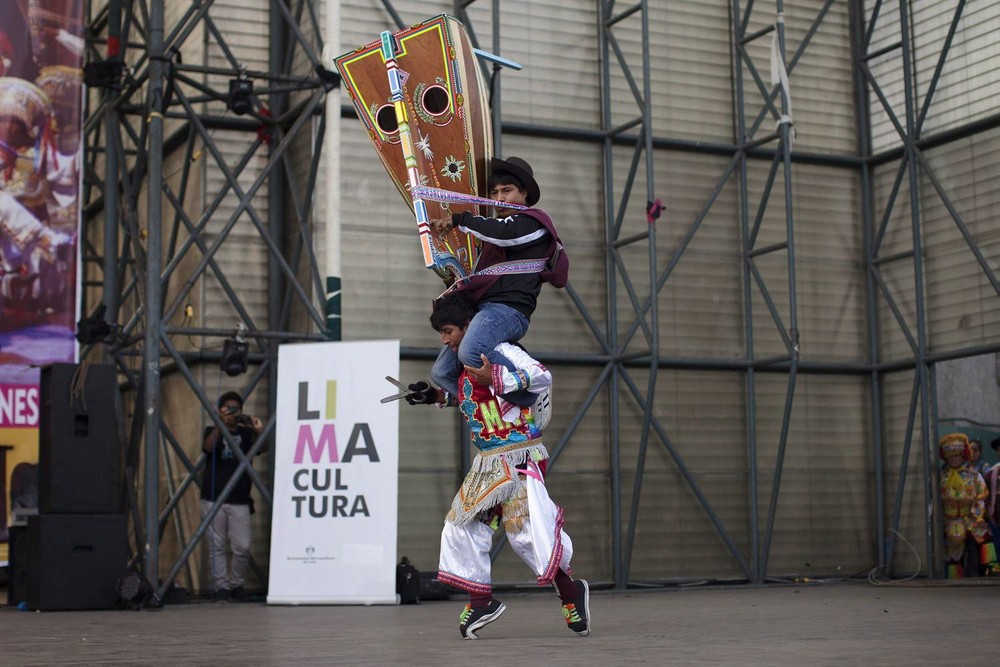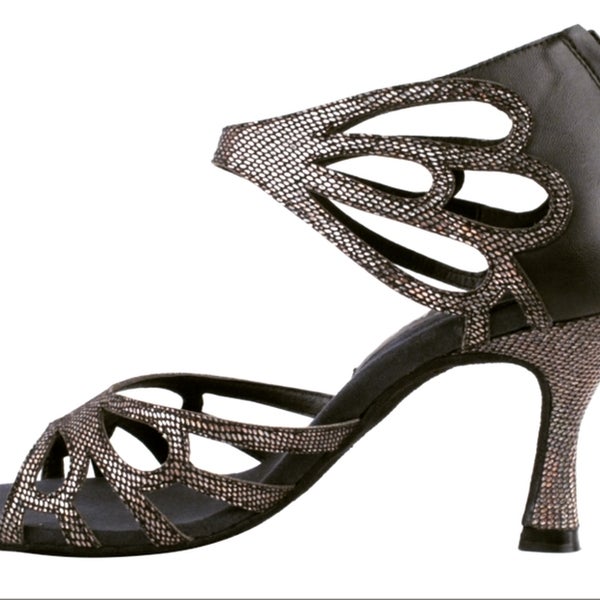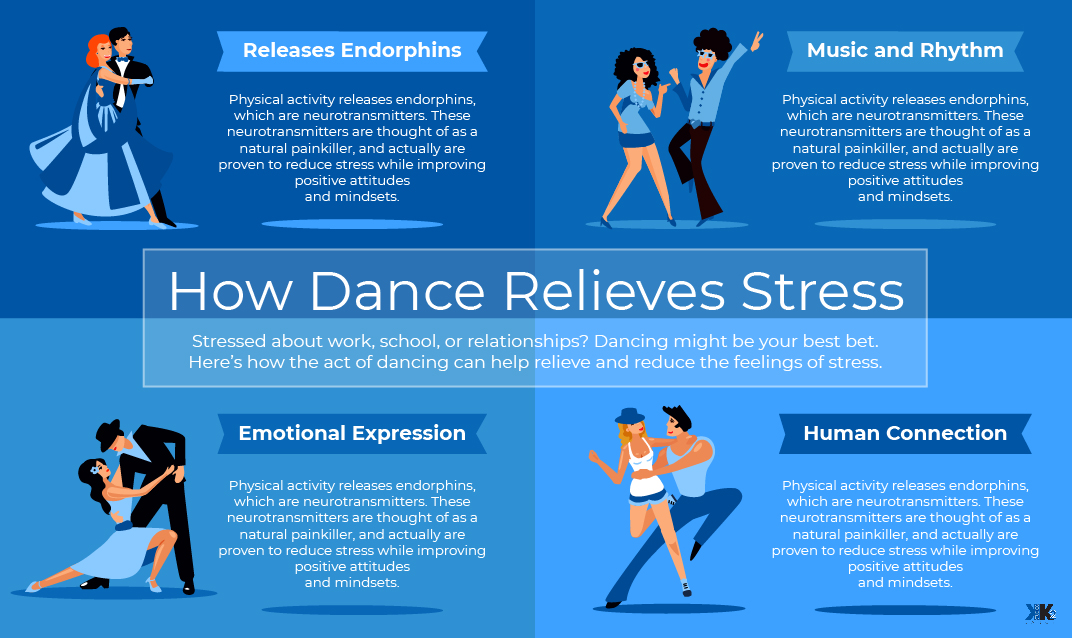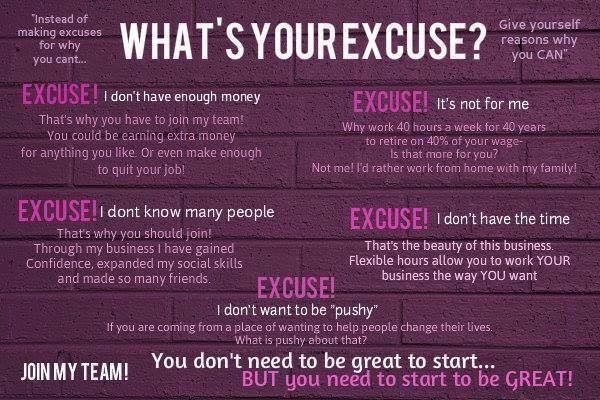How to body pop dance
Learn How To Pop, or Hit With Your Body! (Popping Dance)
Do you want to learn how to Pop your neck? How to Pop your arms? Your PECTORALS?
Let's learn about the *Pop (sometimes referred to as a Hit), and practice Popping with different parts of your body.
*We will be using the terms "Pop" in this article.
What is a Pop, or Hit?
A Pop, or Hit, is the most fundamental move in Popping. In fact, some might even say that it is the only move that really defines Popping.
Read about the style here: What Is Popping?
Popping is done by flexing specific muscle groups, usually to beats in music.
Dancers Pop continuously to a steady rhythm, while using different poses and pathways in between Pops.
How do you Pop?
The more energy you put into flexing, within a smaller amount of time, the stronger you Pop will look.
Learning how to Pop requires a lot of repetition and drilling, so practice Popping using one body part at a time.
As a result of conditioning, your body will memorize how to Pop certain body parts in different angles and pictures.
How to Pop your chest
Popping with your chest requires you to control your core. Suck in your lower stomach /diaphragm to push your upper chest out.
The faster you do it, the stronger your hit will look. Also, curve your spine in and out to create an even bigger effect.
How to Pop your neck
To practice neck Popping, use the muscles in the front of your neck to control moving your neck forward, back, and side to side.
While, try to keep your chin level, because isolating your neck will make it easier to see how much your head is moving.
“It should feel like something is tapping you on the back of your head.”
– Boogie Frantick
How to Pop your arms
Start with your arms outstretched, straight front of you (parallel to the ground). Loosen your arms by bending your elbows a bit, then flex everything.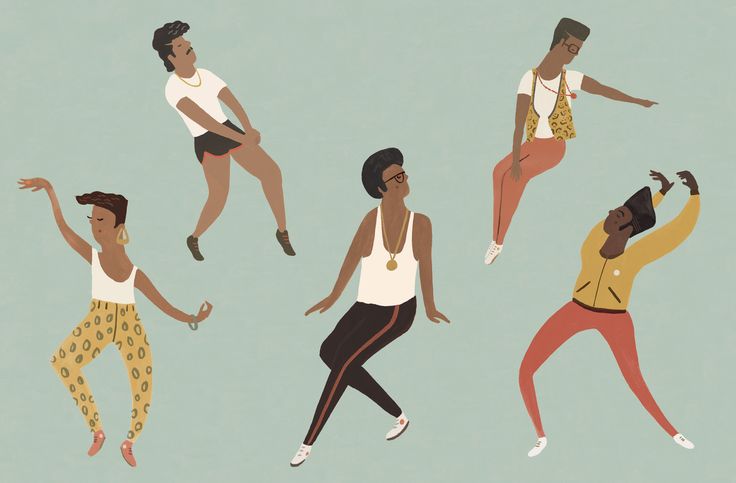
If you want to know how to Pop with your hands, then snap downward with your wrists as your knuckles snap upward.
Pretend like you're revving a motorcycle engine really fast.
Afterwards, you can put all these parts together to create a full arm pop.
How to Pop your legs
Sit on a chair and focus all your energy on flexing your left, then right leg. Then stand up and try to execute the Pop with the same control.
Since it's more comfortable to train on a chair, you'll be able to strengthen your thigh and calf muscles before doing it standing.
All these tips are from Boogie Frantick's Beginner Popping Program on STEEZY Studio.
You'll learn all the basics, so it's perfect for beginners who don't know how to Pop.
He'll go in-depth with each technique, and give you drills that you can practice anywhere, anytime.
If you want to keep practicing your Pops/Hits, then take Clay's 7 Days of Hits Program on STEEZY Studio.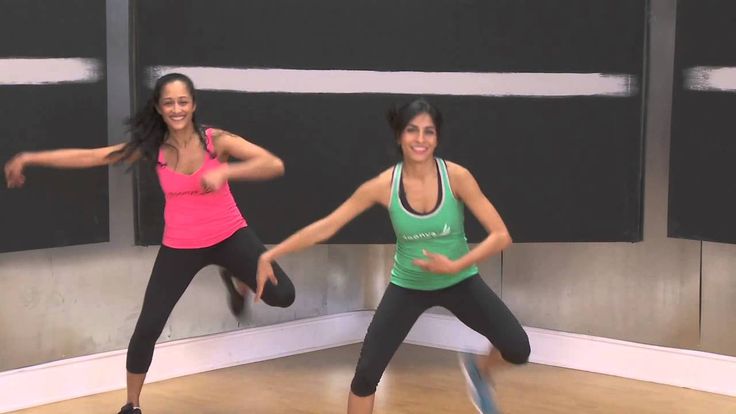
Each day, you'll practice hitting with a different part of your body, or learn a new concept like textures or timing. Try it now for free!
How To Learn Popping – The Ultimate Popping Training Guide
Want a clear, easy-to-follow guide to learn Popping? This 8-week Popping Training Guide is the perfect way for beginners to cover all the major Popping techniques.
The Popping training guide is divided up like this:
Week 1: Hitting, Arm Waves
Week 2: Body Waves, Glides
Week 3: Review, Freestyle
Week 4: Isolation, Animation
Week 5: Fresno, Flexes Week
6: Review, Freestyle Week
7: Walk out / Boogaloo, Twist, Tuts
Week 8: Review, Freestyle
Follow this Popping Training Guide to learn and practice all the basic Popping moves you need to know.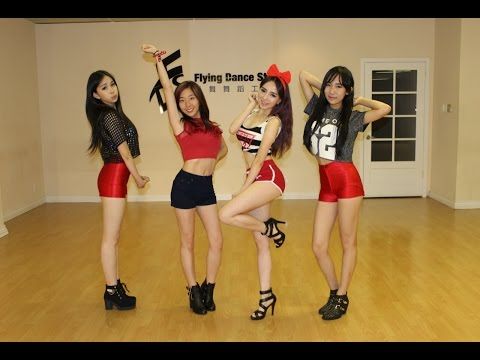
You can also download this Popping Training Calendar PDF to custom-plan your schedule:
Download Your 8 Week Training Calendar To Follow Along!
Popping Technique 1: Hitting
Learn how to hit:
Hitting (or popping) is when you flex and release your muscles as quickly and as powerfully as possible. Hitting is done to the beats in music.
For more in-depth instruction, read: Learn How To Pop, Or Hit With Your Body!
Drill Popping hits:
Practice by hitting one body part at a time (arms, legs, chest/torso, neck), in different positions.
Play this song:
- 4 8-counts: Hit with your arms extended straight in front of you, parallel to each other
- 4 8-counts: Hit with your arms extended straight out, perpendicular to the ground
- 1 8-count: From this position, hit as your arm rises up in increments until they are straight up above your head, parallel to each other.

- 1 8-count: Then bring them back down, still hitting on beat. (repeat this up-down motion as many times as you wish)
- 4 8-counts: Hit with your torso/chest
- 4 8-counts: Sit in a chair, and hit with your neck
- 4 8-counts: Stay in the chair, and hit with your legs
- 2 8-counts: Stand on one leg, and hit with the other leg slightly extended out
- 2 8 counts: Stand on the other leg, and hit with the other leg slightly extended out
OR,
Just take Clay's 7 Days of Hits Program on STEEZY Studio!
Things to remember:
You want your hits to pack in as much power as possible, in the shortest amount of time possible.
You can hit on the 1 (boom), or the 2 (ka), both, or “ride through” the 1 beat to the 2.
Popping Technique 2: Arm Waves
Learn how to do the Arm Wave:
The 12-point arm wave can be broken down like this
Drill Popping Arm Waves:
Practice the 12-Point Arm Wave with Boogie Frantick
More practice:
- Practice the 12-point arm wave with your arms straight out, reversing directions each 8 count. Do this 4 8 counts slowly, 4 8 counts tempo.
- Then, do it with one arm only for 4 8 counts.
- Switch arms, repeat for 4 8 counts.
- Wave both arms inward towards your chest for 4 8 counts, then reverse it out toward your fingertips for 4 8 counts
- Wave any or both arms in any direction for 4 8 counts. Get creative! You want your arms to “memorize” the pathway of the wave in as many positions as possible.
Things to remember:
It’s important to break down each point of the 12-point wave before blending it all together to create a smooth movement.
This builds your arm’s muscle memory. Keep your hands loose and fluid, and rotate your elbows to create a smoother wave.
Practice facing a mirror; how the wave looks from your POV might not be how it looks to someone watching!
You can practice waving your arms in any / all positions, not just the angles given.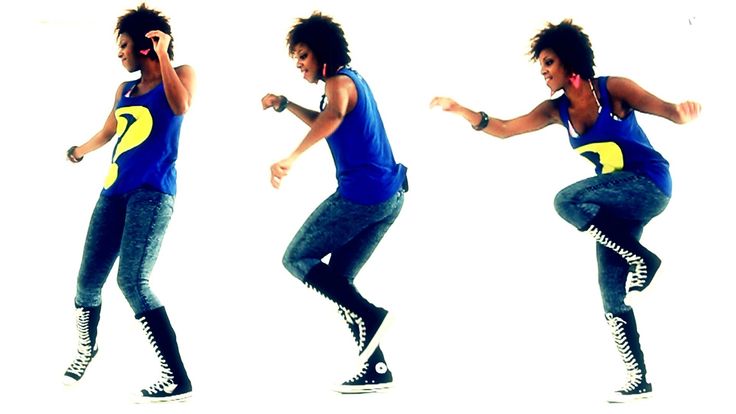
Popping Technique 3: Body Waves
Learn how to body wave:
The 8-point body wave: move in one direction, starting with your head, shoulders, hip, knee, other knee, back to your hip, shoulders, up to your head.
The wave should move down one side of your body, then back up the other.
Drill Popping body waves:
Wave down one side of your body for 4 counts, then back up for 4 counts.
Do this for this entire song:
Things to remember:
It’s important to start and complete your full body waves.
Drill how to isolate the different parts of the wave, but incorporate it into your grooves.
You can start the full body wave from different body parts (like from the ground-up).
Technique 4: Glides
Learn how to Glide:
Do the step-glide by stepping out with one foot, then sliding it back.
Do the over-under/under-over glide by lifting the heel of one foot, and sliding the other foot in front of it. Take that same foot, and slide it behind the other foot.
Drill Popping glides:
Practice the Step Glide with Boogie Frantick with this free YouTube drill:
More practice:
- Do the over-under/under-over glide 4 times in one direction, then 4 times in the opposite direction
Things to remember:
Footwork doesn’t mean your upper body isn’t doing anything! Add your own flavor with grooves or head looks, etc.
Gliding is all about shifting your weight on your feet. Pay attention to which foot and where (heel/toe) your weight is.
Review: Hitting, Arm Waves, Body Waves, Glides
Re-visit the techniques from weeks 1 and 2. Combine all the techniques that you learned in a guided freestyle.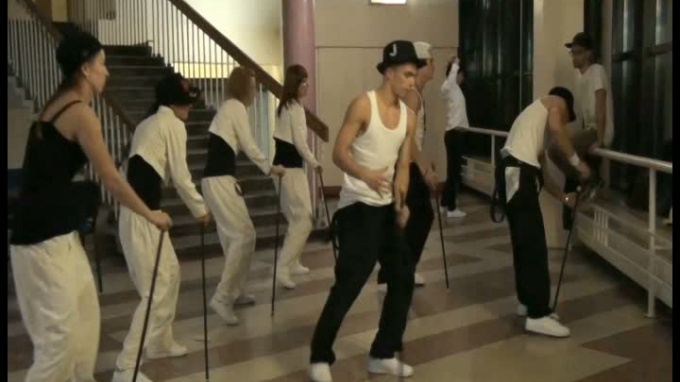
Play this song:
- 2 8-counts: Hit with your arms in any position
- 2 8-counts: Wave both arms in any angle
- 2 8-counts: Do the body wave
- 2 8-counts: Do the step-glide in any direction
- 2 8-counts: Hit with your chest
- 1 8-count: Wave only 1 arm, in our out
- 1 8-counts: Wave with the other arm, in our out
- 2 8-counts: Body wave as you step out with your feet
- 2 8-counts: Do the over-under glide
- Remainder of the song: Combine any of the techniques in your own freestyle
Popping Technique 5: Isolations / Fixed Points
Learn how to do isolations and fixed points:
Isolate one body part and move it while the rest of your body stays still, or
Keep one body part at a fixed point as the rest of your body moves around it.
Drill Popping isolations and fixed points:
Play this song:
- 4 8-counts: Isolate your head by moving it front and back
- 4 8-counts: Isolate your head by moving it side to side
- 4 8-counts: Isolate your head by moving it in a circular motion, like you’re making a letter “O”
- 4 8-counts: Extend your arms straight in front of you, and create circles with your hands
- 4 8-counts: Keep the same position, then start bending/moving at your wrists and elbows
- 4 8-counts: Isolate your legs by doing an “in-place” glide – keeping one leg planted while the other glides in front of it and back
- 8 8-counts: Fix point different things, like putting your hand on a “wall” and dancing around it, or holding a “ball” and only moving the ball
Things to remember:
Isolations and fixed points are great tools to create concepts, imagery, and stories. Solid balance is key when fix pointing your leg(s) and moving your upper body.
Popping Technique 6: Animation
Learn Popping animation:
Ticking is when you snap into a position with your joints.
Strobing is a faster pace of dime stops; it creates this illusion of leaving a trail of movement (like you’re dancing under a strobe light).
Poppers often strobe in pedestrian movements like walking.
Botting is when you create a “Robot” effect with your whole body using parts of these techniques. It makes your body/movements look “fake.”
Drill Popping animation:
Start this mixtape:
- Tick through the entire 12-point arm wave for 5 minutes straight
- Do the 4-point tick walk: stepping forward with one foot, and ticking the other leg in 4 points as you complete the step
- Strobe as you arm wave, walk, and complete other pedestrian movements (cooking, brushing your teeth)
Things to remember:
Keep your core nice and firm when you’re ticking your limbs and make your dime stops as clean as possible when you strobe.
Popping Technique 7: Fresno
Learn how to do the Fresno:
The Fresno is a part of Popping / Boogaloo technique. Shift your weight from side to side as you hit with each leg and arm.
Drill the Popping Fresno:
Play this mixtape:
- 4 8-counts: Do the Fresno (1 hit makes you move, the 2nd makes you stop)
- 4 8-counts: Hit your bottom right diagonal, bottom mid position, then bottom left diagonal
- 4 8-counts: Do the Fresno in a “single single double double,” AKA your arms hitting right left right right, left right left left
- 8 8-counts: Do the Fresno with variations with your steps (walk outs)
Things to remember:
The Fresno is important because it really teaches you how to stay with the pace of the music. Use your weight to keep balance as you pivot your feet.
Your whole body turns, not just your hip!
Never snap your legs all the way back; use your ankles to buffer the hits.
Popping Technique 8: Flexes
Learn how to do flexes:
The Twist-o-flex is when you put your hands on either side of your hips, then pivot your arms so that your chin is touching one shoulder.
Turn your upper torso to meet the plane of your hand placements there, then step forward to your base position.
The Neck-o-flex is when you touch your chin to a shoulder as you extend it out, then pivot your lower body around your arms as your head stays facing that direction.
Then, turn your upper body and head to the opposite arm.
Drill Popping flexes:
Play this:
- 8 8-counts: Twist-o-flex
- 8 8-counts: Neck-o-flex
- 8 8-counts: combine both flexes in your own freestyle
Review: Isolations, Animation, Fresno, Flexes
Re-visit the techniques from weeks 4 and 5. Combine all the techniques that you learned in a guided freestyle. Play any song you like.
Play any song you like.
- 2 8-counts: Isolate any body part
- 2 8-counts: Isolate another body part
- 2 8-counts: Fixed point one body part
- 2 8-counts: Fixed point another body part
- 2 8-counts: Tick the 12-point arm wave
- 2 8-counts: Tick while walking
- 2 8-counts: Strobe from/to any position
- 2 8-counts: Do the Fresno
- 2 8-counts: Do the Twist-o-flex
- 2 8-counts: Do the Neck-o-flex
- Remainder of the song: combine any of the techniques in your own freestyle
Popping Technique 9: Walk Out and Boogaloo
Learn the Walk Out and Boogaloo:
Do the Walk Out by crossing one leg in front and across from you. With that some foot, step toward the other diagonal.
Twist to that direction, then step forward with the back foot. Use the same foot to step behind yourself, then pivot to the front, and bring both feet in.
The Boogaloo is when you do a full body wave, starting from your head rolling all the way around, rolling your shoulders in opposite directions, pushing your chest out, then bringing your hips and knees out and around.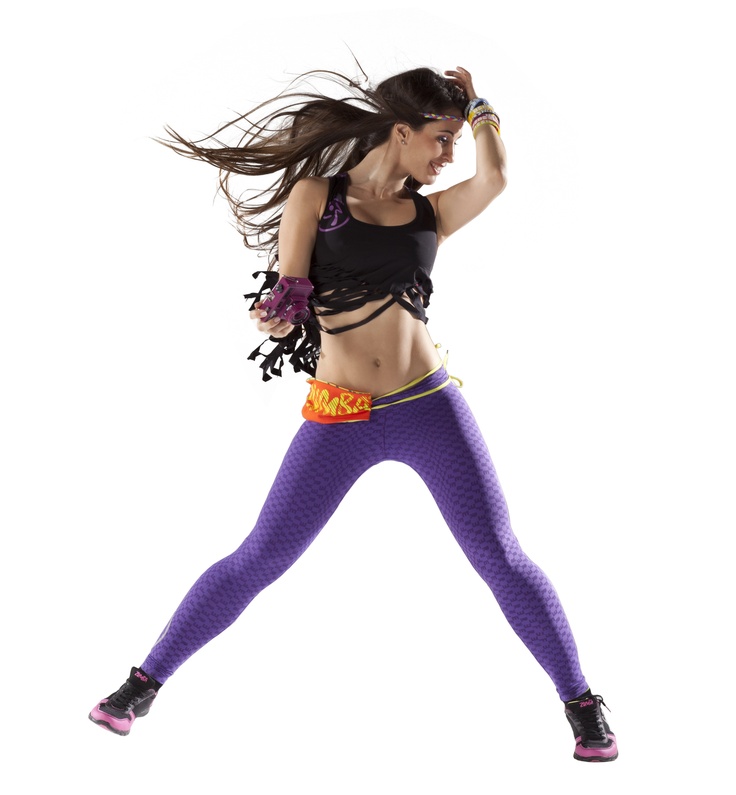
Drill the Walk Out and Boogaloo:
Play this:
- 14 8-counts: Hit all the 7 points of the walk out 4 times each.
- 14 8-counts: Use your opposite foot to start and hit all the 7 points of the walk out 4 times each.
- Repeat hitting during the walk out on each side, but 2 times in each position.
- Repeat again, 1 hit in each position, in tempo with the music.
- Draw a “figure 8” with your knees to prepare to do the Boogaloo roll.
- 8 8-counts: do slow Boogaloo rolls - fill up the full 8-count per roll
- 8 8-counts: medium Boogaloo rolls - 4 counts per roll
- 4 8-counts: fast Boogaloo rolls - 2 counts per roll
Things to remember:
For the walk out, use your opposite arm when you step forward with a leg.
Stay loose with your body as you do the Boogaloo roll.
Popping Technique 10: Twists
Learn Popping twists:
Do the Egyptian Twist by making angular pictures with your arms as you pivot your focus and toes toward different directions.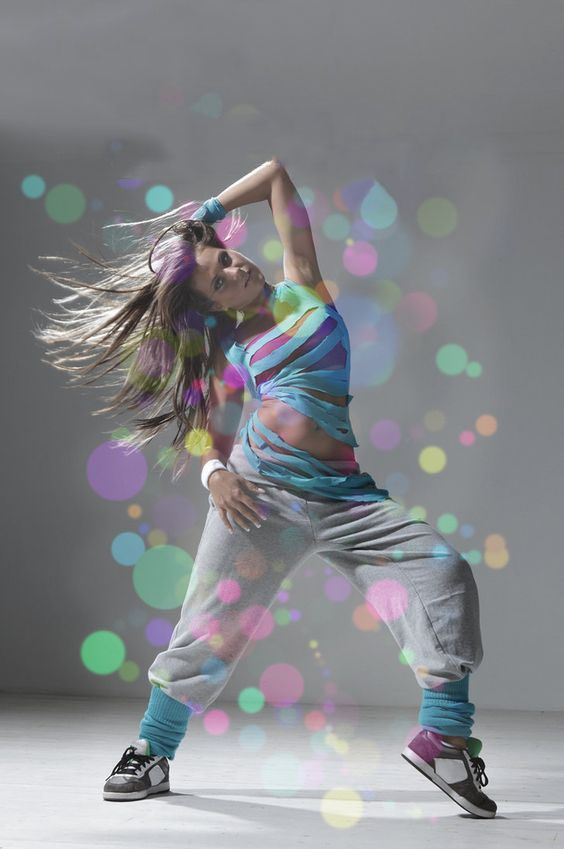
Drill Popping twists:
Play this:
- 1 8-count of Egyptian twist to your right.
- 1 8-count of Egyptian to your left.
- 2 Egyptian twists to your right, 2 steps to your right.
- 2 Egyptian twists to your left, 2 steps to your left.
Things to remember:
Keep your upper body and shoulders squared to the front, with your face following your toes. Hit with each time you pivot or step.
Popping Technique 11: Tutting
Learn how to Tut:
Tut by creating different lines and shapes with your arms. Bend from the elbows, wrists, and fingers.
Drill tutting exercises:
- Play any song
- From a resting position, bend at your elbow to raise one arm to chest level
- From there, extend it straight up
- Go through this same pathway to bring your arm down
- 8 8-counts: Drill your arms in this up-up-down-down pattern, alternating between arms
- Now raise both arms by the elbows in front of your face, and bend in a 90 degree angle at the wrist
- 8 8-counts: Alternate bending each side
- 4 8-counts: Extend your arms straight out on each side, and bend at the the elbows and wrists at 90 degree angles to create a “Z” then rotate them inward to create a box
Things to remember:
Keep your angles clean! 90, 180 degrees
Review: Boogaloo, Twists, Tutting
Combine all the techniques that you learned in a guided freestyle.
- 2 8-counts: Boogaloo rolls
- 2 8-counts: Egyptian twist
- 2 8-counts: Tut with just your arms
- 2 8-counts: Tut while traveling with footwork (you can just step, or glide)
- 2 8-counts: Walk out and Boogaloo rolls
- 2 8-counts: Egyptian twist in different variations
- Remainder of the song: combine any of the techniques in your own freestyle
Use this guide to train your basic Popping technique within 2 months.
If you want to follow along with a tutorial, STEEZY Studio’s Popping Program (taught by renowned Poppers Boogie Frantick, Kid Boogie, and Slim Boogie) is a much easier way to train.
All you have to do is plan out your schedule and follow along with the videos. Sign up here to try it out for free!
How to learn how to dance body dance
Body dance is a fitness program from a series of dance aerobics, which promises fast results with the preservation of the effect (9 kilograms in a month with a frequency of 5 times a week). The complex consists of a warm-up and several intense exercises. To learn how to learn to dance body dance, read on.
The complex consists of a warm-up and several intense exercises. To learn how to learn to dance body dance, read on.
Warm-up
The warm-up exercises are quite simple, you can even replace them with your favorite dance moves, just remember to alternate: one movement for the legs, one for the body, one for the legs, another for the arms and so on. A warm-up is essential to warm up the muscles and speed up blood flow. Do it for 10 minutes with energetic music.
Shoulder girdle
After warming up, we immediately move on to movements aimed at working the shoulder girdle. Quickly and sharply raise your shoulders as high as possible, lowering more slowly. At this time, walk back and forth at an energetic pace, raising your knees to the beat of your shoulders.
Quickly and sharply raise your hands from behind your head up, throwing out your fingers. The elbows are not mobile, the arms go down more slowly than they go up. Do not forget about the side step, from side to side, you must be on the move all the time.
Next, we spread our arms and bring the shoulder blades together, all at the same pace: quickly and sharply. We add steps with lunges on the left and right legs in turn.
In a similar manner, do a few more exercises for the shoulder girdle zone (bringing your arms bent at the elbows in front of you, swinging your arms in front of you) or do the first three exercises again, but in random order.
Front surface of the thigh
We spread our legs shoulder-width apart, toes look outward, squat in an intense rhythm, but not deep, stretching our arms up in time with squats
Bring the left leg back and extend the arm in front of you. We perform swings. To fast music, so that the toe of the foot touches the palm of your hand. We repeat with the right leg. If doing swings in this way is difficult, try doing them with a slightly bent leg.
We swing to the side, making sure that the toe is pulled up. To maintain balance, when swinging with the right leg, we keep the left arm extended to the side, and the right arm in front of us, for the left leg, vice versa.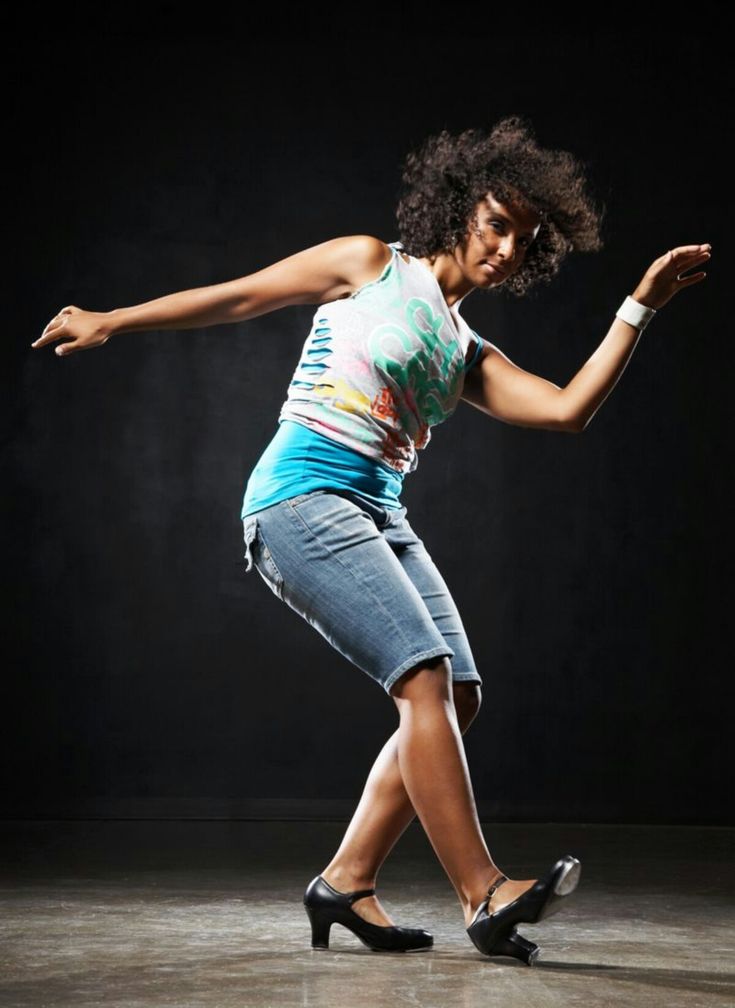
Hamstring
Lean on a chair or lie on the floor and quickly and sharply begin to reach the buttock with your heel. First, with the heel of the left foot, the right buttock, then with the heel of the left foot, the left buttock. For the right leg, the opposite is true.
Now we stretch, lean forward and continue to make progressive movements to the music, move the pelvis as far back as possible (if you do exercises on the floor, you can stretch while sitting on the buttocks).
Inner thighs and buttocks
Bring your bent knees in and out, absorbing movement with a springy motion. Perform mixing - breeding at least 10 times. Followed by jumping crosswise. We jump easily, on toes, bringing our legs crosswise and spreading apart, feeling how the inner side of the thigh is tensed.
We swing for balance. We take the leg to the side and raise it to the maximum height, now we begin to balance with the leg, up and down. We do 20 times on each side.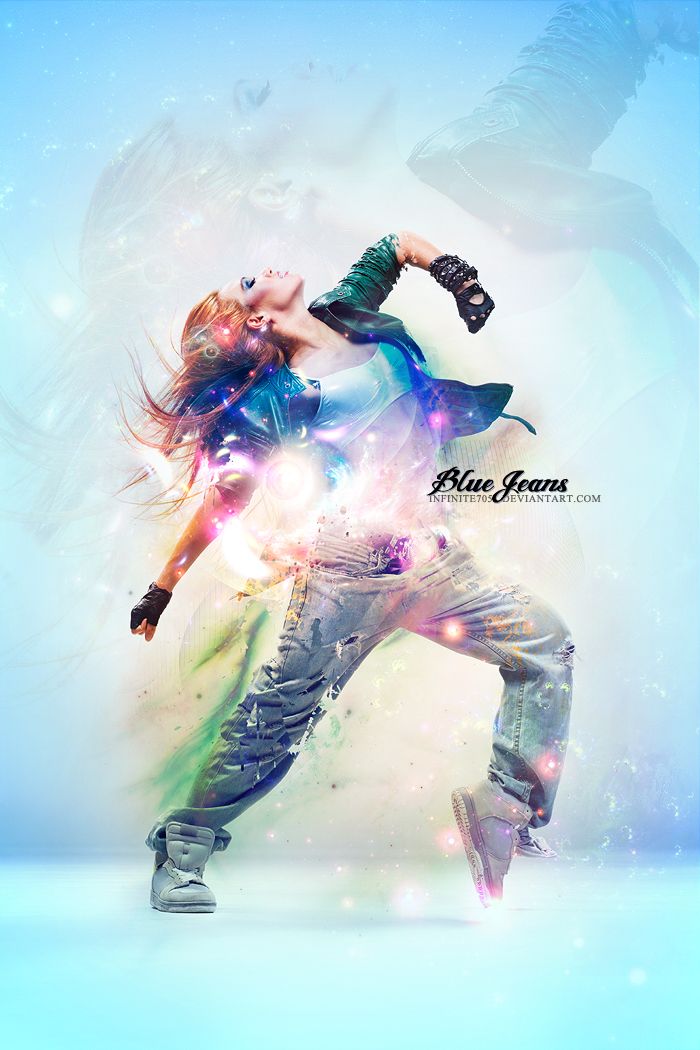
It's time for back swings. We do them with effort, moving the leg up as far as possible. We do 20-25 times for each leg. After this movement, we move on to rolls on the buttocks. We sit on the ass and roll over to the left side, and push the right leg back and forth, as when you sit down comfortably. Now we roll onto the right buttock and take out the vered - back the left leg. We continue until tired.
These are not all the exercises from the program, but this is quite enough for the first time to learn how to dance body dance and lose three annoying kilograms.
Vogue as a dance - from pop, dip and spin to vogue femme
Vogue as a dance began to take shape in the 70s - 80s of the last century in New York and is inextricably linked with house music, since vogue was originally danced precisely to classic house beats. At the very beginning of its development, it was a dance that consisted entirely of posing - posing (from the English pose - pose). Then the ability to quickly change poses to the music came to the fore: very expressive, bright, bewitching. People competed in this skill: to artistically change poses, similar to photos of models from glossy magazines, to the music. That is why the name vogue took root for the nascent dance style. Vogue competitions were held in clubs and were called balls, and became one of the brightest parts of the ballroom culture.
People competed in this skill: to artistically change poses, similar to photos of models from glossy magazines, to the music. That is why the name vogue took root for the nascent dance style. Vogue competitions were held in clubs and were called balls, and became one of the brightest parts of the ballroom culture.
An important component in vogue is fashion. This style began to develop during the great popularity of top models, during the heyday of large fashion houses - Gucci, Versace - and this high, expensive fashion for the rich greatly influenced the development of dance. For example, in the runway category (English - catwalk) - you need to show the ability to beautifully walk the catwalk like a top model. There are many categories related to fashion design, with the ability to dress fashionably. For example, in best dressed (English - the best clothes) it is important to choose the coolest outfit. In the category labels (English - label) they compete in the number of expensive branded clothes put on (and picked up).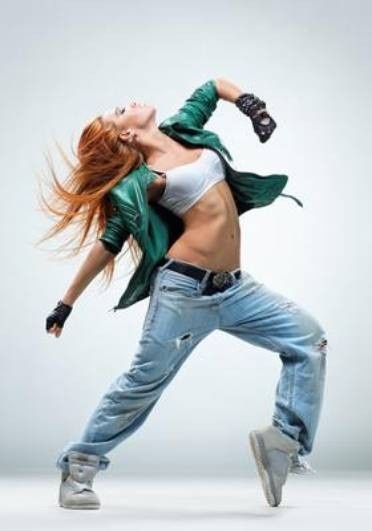 The person actually comes out, turns the clothes inside out and shows the tags to the judges.
The person actually comes out, turns the clothes inside out and shows the tags to the judges.
Gradually, posing begins to become more complex and evolve. This is how “pop, dip and spin” (English stop, go to the ground and spin) appears - a new form of vogue, named for the three main elements performed. In an effort to be more complex and more interesting, in a desire to surprise others, people began to add movement and dynamic movements between poses. Thus, a dance appears (in our usual sense), also based on poses, under the same house beats. Also in voga, in its inception, there were hard, strong movements from martial arts, since films about martial arts were popular at the same time, and military elements, such as marches.
As higher and secondary education becomes more accessible, as the popularity of sports grows, people with good dance and acrobatic training appear. They began to add tricks, complex dance and acrobatic elements to their exits (in voga, it would be more correct to say: performances, performances).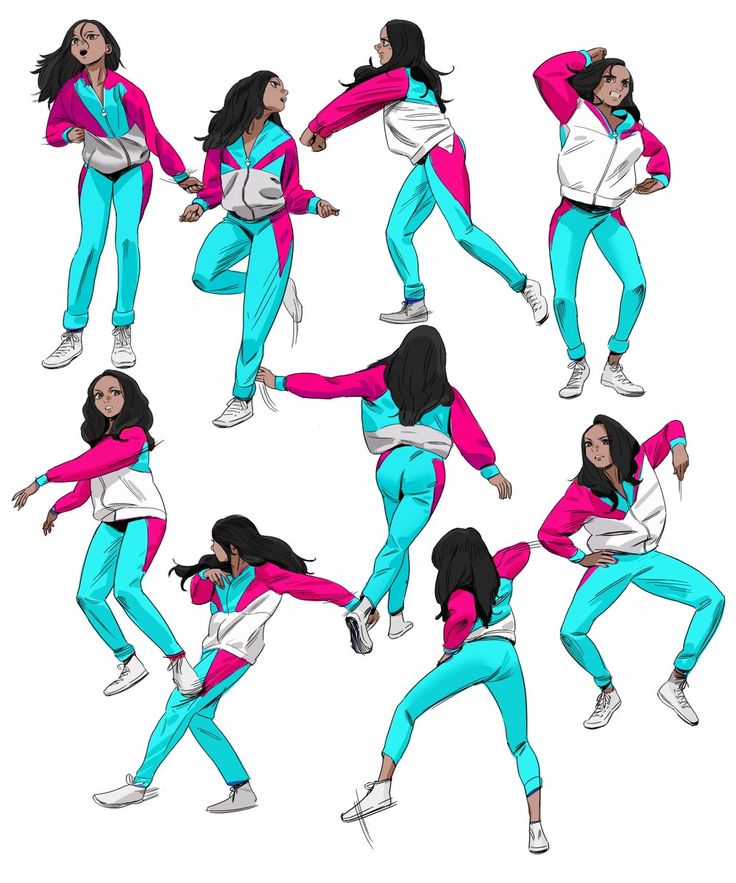 The style is becoming more complicated, people are trying to bring something new, to surprise. Dancers who did not have such education and skills were invited to perform in a separate category so that everyone would have the same chance of winning. Thus, the category performance with gymnastics (English performance with gymnastics) appeared. Over time, these categories - pop, dip and spin and performance with gymnastics - became known as the old way (the old way of voguing) and the new way (the new way), respectively. Now in the USA there are very few of those who dance the old way and new way, the most popular category at the moment is vogue femme (eng. female - female, feminine). Interestingly, these categories (old way and new way) have been revived in Russia and Europe.
The style is becoming more complicated, people are trying to bring something new, to surprise. Dancers who did not have such education and skills were invited to perform in a separate category so that everyone would have the same chance of winning. Thus, the category performance with gymnastics (English performance with gymnastics) appeared. Over time, these categories - pop, dip and spin and performance with gymnastics - became known as the old way (the old way of voguing) and the new way (the new way), respectively. Now in the USA there are very few of those who dance the old way and new way, the most popular category at the moment is vogue femme (eng. female - female, feminine). Interestingly, these categories (old way and new way) have been revived in Russia and Europe.
Vogue began to develop in Russia in 2008-2010. It all started with master classes by visiting wog masters from the States - Benny Ninja and Archie Burnett. They showed exactly the old way and the new way, so Vogue came to our country not in the most modern form at that time, but in its original form.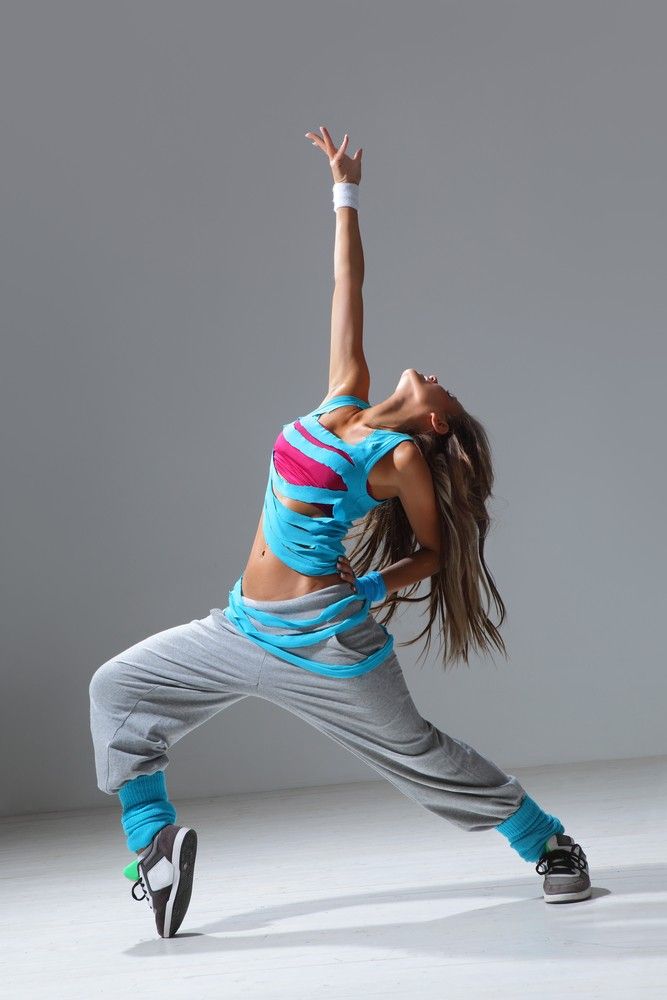 That is why these categories are quite widespread in our country, in contrast to the United States. Vogue femme appeared in Russia a little later, and it needed time to "swing" to become the most popular category. There are also non-dance categories in American vogue culture, which we mentioned above: labels, best dressed, runway. This is a kind of “charisma battle”: the one who knows how to present himself, convey emotions, and make the viewer look at himself wins more often. In vogue, such things as the ability to show oneself, delivery, performance, expression are of great importance, often more than the technique of movements.
That is why these categories are quite widespread in our country, in contrast to the United States. Vogue femme appeared in Russia a little later, and it needed time to "swing" to become the most popular category. There are also non-dance categories in American vogue culture, which we mentioned above: labels, best dressed, runway. This is a kind of “charisma battle”: the one who knows how to present himself, convey emotions, and make the viewer look at himself wins more often. In vogue, such things as the ability to show oneself, delivery, performance, expression are of great importance, often more than the technique of movements.
Balls
Vogue is almost the only modern battle style where costume and appearance matter. At balls, most often put forward requirements for clothing, indispensable for execution. If it is announced that the image of a Catwoman is required, then you need to come in the costume of a character, and not an abstract cat. If the color of the ball is red, then everyone comes in red. If the requirements are not met, then the participant will be chop (English chop - chop), that is, they will be disqualified.
If the requirements are not met, then the participant will be chop (English chop - chop), that is, they will be disqualified.
Select (selection before the competition itself) in Vogue is called "tens". This name has been fixed since the time when the judges had tablets and gave points to the participants. Accordingly, the highest score - dozens - meant and now means the passage to the next round of the competition. Now there are no scoreboards, instead the judges show ten fingers.
In Russia, Vogue began with dance categories, not with culture in general. From the very beginning there was no division into categories, everyone just danced “vog”: all the ways that they knew at that time were mixed up. And just after the arrival of Benny Ninja and Archie Burnett old way and new way - that's all people knew. Now we understand that these are different ways to dance, and they should not be mixed, separate categories are allocated for each of them. Of course, over time, the style developed in our country, dancers appeared who began to specialize separately in each category, the first of which were old way, new way, runway and vogue femme. Then more and more categories came from the USA, and already at the moment more than 20 categories can be entered at balls in Russia. The balls themselves can go longer than 12 hours: there are many participants, many categories. Unlike Russia, balls are often held in the States, almost every Saturday, and only at night. In our country, large balls that strive to get closer to the American standard also take place at night.
Then more and more categories came from the USA, and already at the moment more than 20 categories can be entered at balls in Russia. The balls themselves can go longer than 12 hours: there are many participants, many categories. Unlike Russia, balls are often held in the States, almost every Saturday, and only at night. In our country, large balls that strive to get closer to the American standard also take place at night.
Vogue - a dance of self-expression
Why is the original American dance that came out of the American club culture so attractive in Russia? First of all, for the reason that vogue is a dance about self-expression. Vogue accepts very different people into its ranks. A person can have any figure and appearance, arbitrarily strange, behave strangely - this is welcomed in vog culture, so many unusual people gathered in the circle of vogers. In our country, this style takes the form of almost art. Many Russian dancers make performances, shoot videos in vogue style.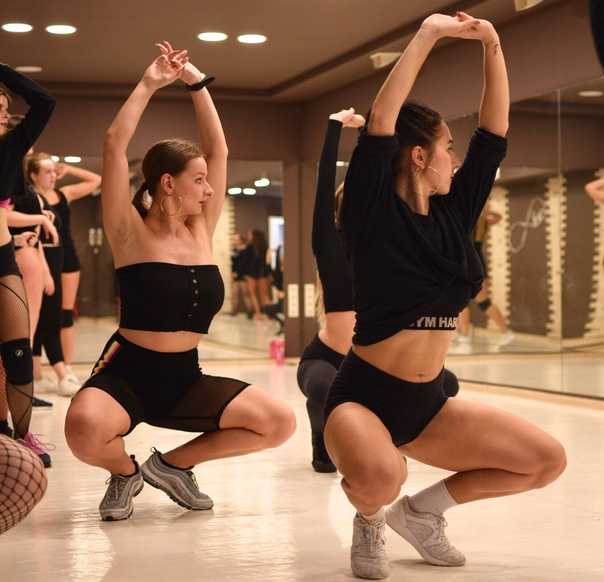 For example, House of Bonchinche, the famous and first Russian vogue house, is doing something new and different from traditional, classical balls and parties: more than the dance itself, wog-based performances.
For example, House of Bonchinche, the famous and first Russian vogue house, is doing something new and different from traditional, classical balls and parties: more than the dance itself, wog-based performances.
Secondly, vogue is attractive because it helps to believe in oneself, liberates, teaches to believe in one's own strength. It takes a lot of confidence to go to balls. In fact, the vog culture is quite tough, they don’t let anyone relax in it (by analogy with real life, which is often not kind and soft). For example, there is such a thing as a shade (shade - English shadow), which means to cast a shadow, to show with gestures that you do not like an opponent. At the same time, there is an important no touching rule (without touching), which was formed for the safety of all participants. The most interesting thing is that after the ball, after the battle itself, despite all the shades thrown at the opponent, the participants can hug in a friendly way and part with pleasant emotions.
An important question that worries many: is there a place for children in Vogue? In the country of origin of this culture, children do not dance vogue. In the USA, this is primarily a culture, moreover, a club culture, an adult one is a closed party. Vogue came to Russia and European countries first of all as a dance, and only then as a culture. We dance it in dance classes, we teach movements; in New York and other cities and states, this is very rare. Based on the fact that in Russia vogue is a dance, children also dance it, and many parents support their desire. In this case, the group should have a competent teacher who will tell what the child can dance and what not.
Vogue is a wide and versatile style, and many who want to express themselves, present themselves, can find their place. If a person likes to dress beautifully and fashionably, he goes into the best dressed or label category, if he likes to walk the catwalk, runway is for him. Those who want to show a good figure and face - the body and face category is created for this. Almost everyone can find themselves in vogue.
Almost everyone can find themselves in vogue.
Vog home
Home is a dancing family with father, mother and children. Parents - father and mother - are the founders of the house and they in due time come up with a name for the new family. By the way, the names of vogue houses are usually the names of famous fashion houses - brands. For example, House of St. Laurent, The House of Margiela, House of Balenciaga, House of Mizrahi are haute couture houses.
Today, few new houses are built, mostly they are all very old - from the 80s, 90s. One of the most famous new homes is House of Amazon by its founder Leiomy Maldonado. All wog dancers dream, strive to get into the house, it is honorable and prestigious. Usually parents notice someone at home, for example, at a ball or see him dancing on the net and invite him to the house if they like him.
About statuses
Once a year in New York there is a ball where a person can be awarded one of the statuses, this happens by a common decision of the most influential American houses.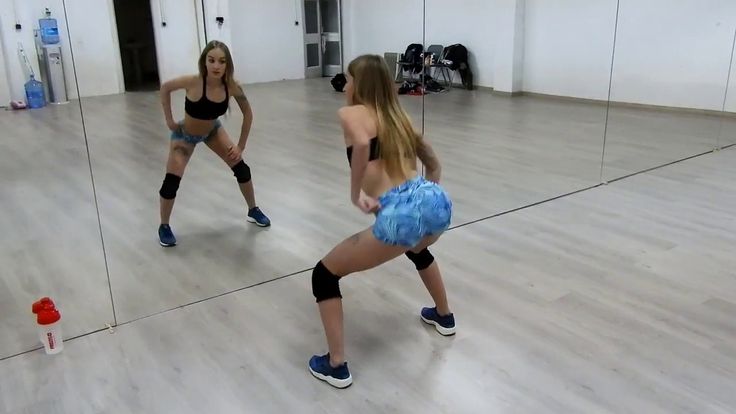 One of these statuses is Legendary (legendary), it is given to dancers who have made a great contribution to vog culture, who have won a lot at balls, won a lot of
One of these statuses is Legendary (legendary), it is given to dancers who have made a great contribution to vog culture, who have won a lot at balls, won a lot of
trophies and have some unique style that has influenced other dancers. The next and higher status in importance is Iconic or Icon (icon). Awarded after many years to those who also made a great contribution to culture, organized balls, very popular. The next and highest is the Hall of fame. There are other statuses that are not so officially assigned. Statement (statement) - for dancers who brightly declared themselves at the ball, Star (star) - for those who have won a lot and may soon become a legend.
Statuses are awarded exclusively in the USA, only in New York. In other countries, including Russia, statuses are not awarded, because now in the world we see a trend towards the unification of all vog scenes. The stage is the place where vogue culture develops. For example, New York is the largest and main stage; Paris is perhaps the second most important, then Russian and other countries. If the scene wants to relate to culture, then it has no right to award its own separate statuses. At a minimum, such a phenomenon would be controversial: many dancers are in American houses, but will award status in their own country on their own. This is wrong, besides, at the moment there is a desire for convergence of all scenes.
If the scene wants to relate to culture, then it has no right to award its own separate statuses. At a minimum, such a phenomenon would be controversial: many dancers are in American houses, but will award status in their own country on their own. This is wrong, besides, at the moment there is a desire for convergence of all scenes.
In addition to statuses, in the US and this year in Russia, awards are given once a year. For example, best New Way of the year, best Old Way of the year, best Butch Queen Vogue Fem of the year, best Womens Performance of the year. There may also be awards such as best house of the year, best father, mother of the year. Awards are given for achievements, for significant accomplishments.
About alternative scenes
There are two alternative vog scenes: Major scene, or Original scene (major scene, or main scene) and Kiki scene (kiki scene). How did the division happen? When vogue reached a large scale, its own party was formed, where people who usually judge and those who usually win stood out. Under these conditions, it was difficult for beginners to compete and pass even "tens", going out at the same balls with experienced dancers and winners of many victories. These newcomers are fed up with the fact that the same judges sit in the chairs and vote for the same ones.
Under these conditions, it was difficult for beginners to compete and pass even "tens", going out at the same balls with experienced dancers and winners of many victories. These newcomers are fed up with the fact that the same judges sit in the chairs and vote for the same ones.
So this talented youth got together and decided to create a separate stage for themselves, where they would have their own balls, their own judges, their own celebrities. They created an alternative scene, not so pompous, not so serious, and called it the kiki scene, where they had fun and relaxed, but nothing serious happened there. Over time, the kicki scene also grew and became stronger, and even now it is impossible to say for sure where they dance better: on the main or on the kicki stage. It is not forbidden to go to balls on both stages. The kicki scene has its own houses, separate statuses are awarded, and it may well be that a person is in a kicki house and an original house at the same time.